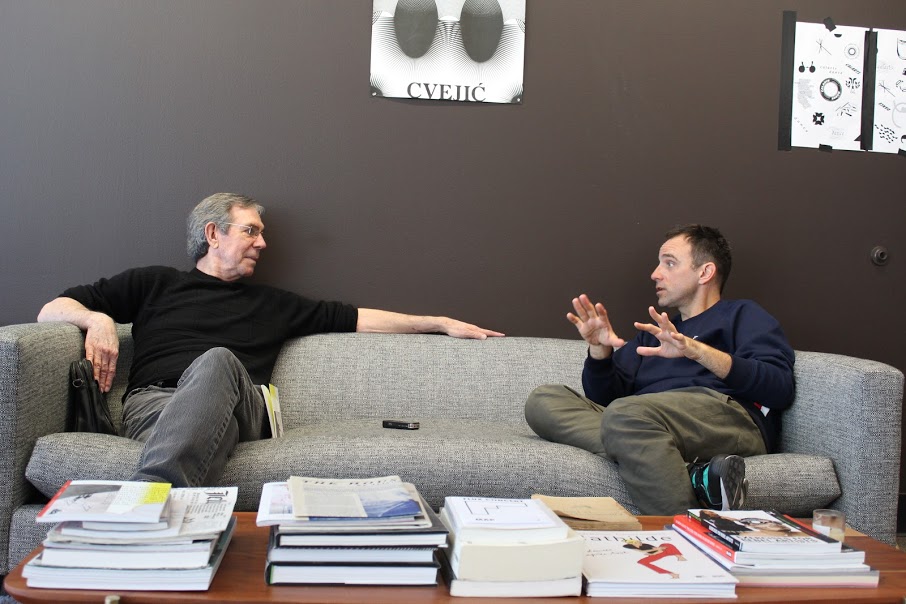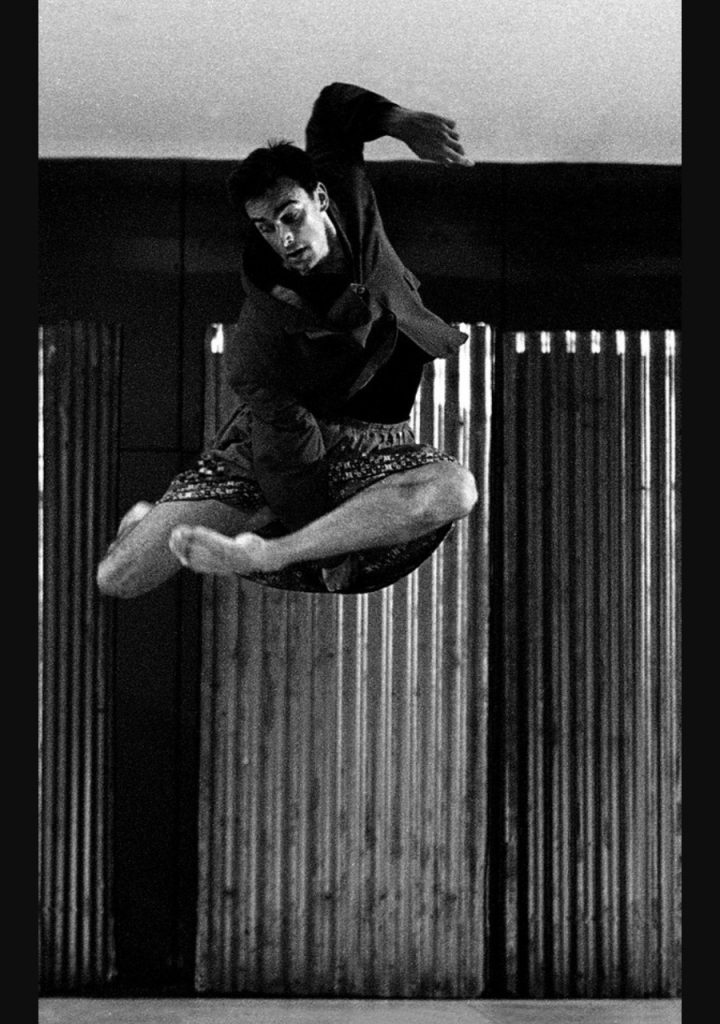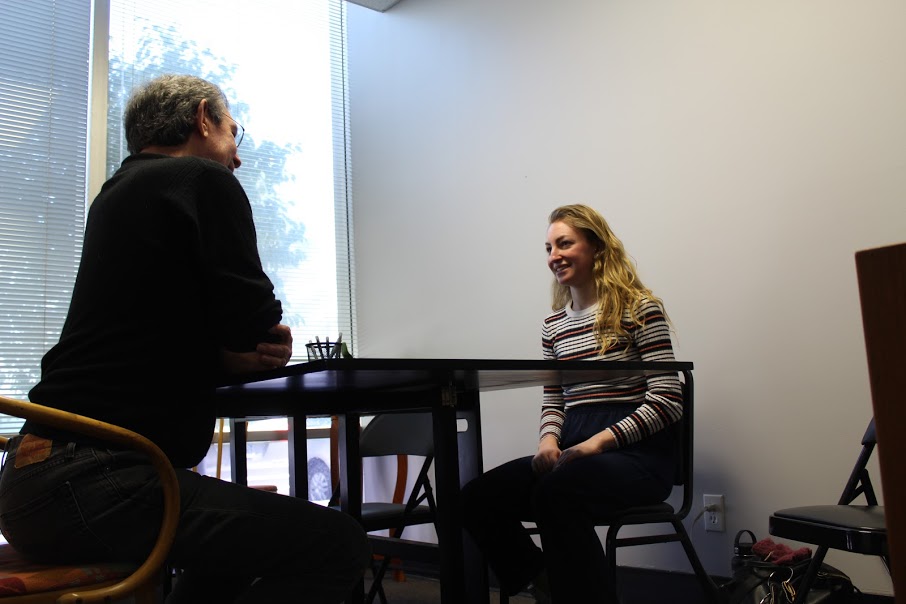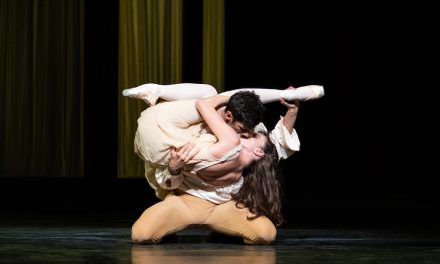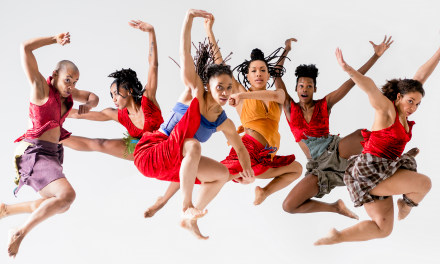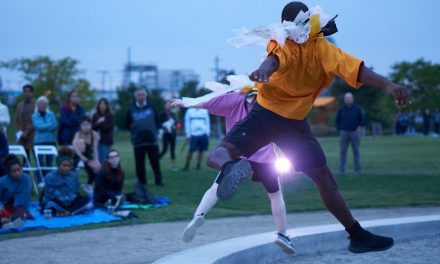Walt and Roy Disney formed California Institute of the Arts (CalArts) through the merger of two existing L.A. schools for art and music with a vision of expanding it to include design, film, theater and dance. Their goal was accomplished a decade later in 1970. It was their desire to cultivate future generations of artists “a multidisciplinary community of the arts built around the real-life experience of working artists.” The Disney brothers wished to collapse the walls between the art disciplines and via collaboration create new and innovative art.
The first Dean of the CalArts School of Dance was the legendary dancer and choreographer Bella Lewitzky followed by Christyne Lawson , then Tina Yuan as acting Dean. For several years the school was without a Dean, but in 2017 CalArts hired French born dancer, choreographer and entrepreneur Dimitri Chamblas.
In December of last year I attended the CalArts Winter Dance performance at the Roy and Edna Disney CalArts Theater (REDCAT) and was pleasantly surprised to see that they were presenting a full evening of repertory by renown choreographers Merce Cunningham, Trisha Brown, Rennie Harris, Jiří Kylián, and Jawole Willa Jo Zollar. Knowing that this was a first for CalArts, I set out to learn more about the man now leading the School of Dance into this direction.
Chamblas began studying at the Paris Opera’s school of dance at age ten and said that he was totally enthralled with dance from the onset. Around the age of 15 his parents took him to see a performance of German choreographer Pina Bausch and they explained how the dancers in Bausch’s company “were not working with pre-existing movements, but from themselves, tasks, music and other things that the choreographer was putting on the table.” Their conversation led to his realization that there were all kinds of movement ideas to explore within inside his own body, not just the very formal ballet technique that he was being trained in.
With this new inspiration, in 1989 Chamblas entered the French National Conservatory where he learned about Merce Cunningham and where he took a few classes with Viola Farber. At the end of his schooling at the conservatory, his senior thesis on Merce Cunningham and John Cage, researching the relationship between music and dance.
Chamblas went on to perform with French choreographer Mathilde Monnier and together in 1996, he and Monnier created the “research and writing residence, an occasion for artists to create personal creative space outside of the traditional production process”. Chamblas feels very strongly that artists need the time to research subject and/or movement ideas or to explore possibilities with other artists. These creative minds need this time separate and apart from running a company or being in a studio creating a new work. Monnier studied primarily with Viola Farber and François Verret at the CNDC-Angers and in 1994, after a decade of creating dances, she became the director of Centre Chorégraphique National de Montpellier Languedoc-Roussillon. Since January 2014, she has been the director of the Centre National de la Danse based in Pantin and Lyon

Dimitri Chamblas (left) rehearsal at Paris Opera with étoile dancer Stéphane Bullion during the transmission of his duet with Boris Charmatz : A bras le corps – Photo: Benoite Fanton @ Paris opera
In 1993, Chamblas and choreographer Boris Charmatz created A bras le Corps, a duet that has since been performed on every continent and in world-renowned theaters and festivals. In her 2006 article in the New York Times, Roslyn Sulcas said about A bras le Corps: “its boxing-ring setting, and visceral physicality caused a sensation in French dance circles. Its creators, Boris Charmatz (the older of the two) and Dimitri Chamblas, were heralded as the vanguard of a new generation of choreographers, and Mr. Chamblas has gone on to become one of the bigger names in French contemporary dance.” It is a duet that has very specific rules and a set performance area, but the type of venue that it is performed in is not fixed. Chamblas and Charmatz continue to perform the duet on a regular basis and in 2017, their duet was added to the repertoire of the Paris Opera. Together in 1994, Chamblas and Charmatz created Edna, organizing events, performances and exhibitions. Edna is not an acronym for anything in particular, but simply a name that was agreed upon.
Upon arrival at CalArts, Chamblas set about creating a welcoming atmosphere for American choreographers. As part of this strategy he “opened the doors and windows and said ‘look, we have these facilities, these studios, etc., come and use the tools.’” Chamblas realizes that when one is fortunate enough to have such a venue, that one should share.
In addition, under Chamblas’ direction the CalArts School of Dance has begun co-producing other choreographers’ work. Two American choreographers that are the recipients of such support are Jermaine Spivey and Spenser Theberge. Theberge has been recruited to teach ballet at CalArts and Spivey is an Artist in Residence for the 2018-2019 academic year at USC Kaufman School of Dance. As part of the agreement at CalArts, the artists will be given technical support for their production and assistance in setting up touring opportunities.
When Chamblas looked at the entire institute of CalArts he saw “a huge potential for building a dance school which would be fitting to the reality of what a dance carrier is today”. “I really feel that what I want to build at CalArts is a new place for dance.” Chamblas said “Is it a school, is it a place for residencies, is it a place for showings, is it a place where we do books, films, etc.? Yes, to all!” He said that when he first arrived, he did not want to simply observe and then act to bring about change but to compress time by forging ahead.
The School of Dance immediately published a book of new pedagogy for dance, created a new clothing line, and created partnerships with museums such as LACMA to demonstrate their many different formats of dance. Chamblas turned the school’s costume class into a slightly more creative class where students take ordinary, everyday clothing and alter them into costumes, and they transform dance clothing such into everyday wear. This opens potential costume ideas for young choreographers and gives them the vocabulary to help them talk to professional designers. This is also true with other courses such as lighting for dance, music for dance and backstage crew. The students produce everything for concerts. It includes, but is not limited to, box office, designing programs and posters, sound editing, camerawork, to the work during the show. Chamblas was quick to add that the work done by the students is “Mentored by faculty”.
“We encourage the students to know about media”. Chamblas said. “How to take photos, how to film, how to produce, and how to edit.” He spoke to the fact that with the current software, students can create incredible things. “They are able to do animation on top of what they have filmed.” He added.
A book that the school published is titled Imagine a Dance Training. On the cover it reads, “CalArts has always benefitted from a commitment to experimentation, and this year’s guest artists traveled to California to introduce new questions, sharing with us their global perspectives. We invited these artists during and after their visits to imagine a dance training”. It highlights the careers of several artist and include transcribed conversations with Faustin Linyekula, Benjamin Millepied, Miguel Gutierrez, Xavier Le Roy, RubberLegz, Boris Charmatz and others who voice their views about imaging the ideal dance training. The book was conceived by Chamblas; the Editor was faculty member Ariel Osterweis, with Graphic Design by Jacob Shpall. It is a wonderful reference and research tool for inspiring dance artists.
Chamblas explained how he and the faculty are exploring new methods or curriculum ideas for the school. He has investigated several dance programs throughout the country and spoken with people in the academic arena about how to train dancers in a more currently focused method. He hopes to create new ways of creating job opportunities, post-graduation, that might provide dancers a living wage without having to wait tables in a restaurant or work simultaneously with more than one dance company.
At a dinner with artists friends, Chamblas discussed how dance artists are currently creating apps for dancers on social media, writing about dance, producing films, creating clothing lines, and/or curating for museums. “My generation,” said Chamblas “we don’t want to be the poor ones anymore.” After explaining all the different hats that he is currently wearing: Dean, curator, dancer, filmmaker, and more, Chamblas said, “Dance brought us there!” He wants to teach the future generations of dancers how to create a career that is fun, interesting and one that will allow them to live decently.
“We want the new generation” He continued. “to dance on the stage in beautiful pieces, doing motion captures at the Disney Studios to pay the rent, to be able to curate a dance festival at the same time as you shoot in a film or choreograph for a commercial.” He said that it is better to do all of this through one’s art than to spend half a day waiting tables “So,” he said. “this has to go in the school.” Because of the way the institution has been created for all the art forms to work together and train dancers to work in film, theater, design, photography, etc. Chamblas believes CalArts is the school to make those possibilities a reality while continuing to have two daily dance technique classes and the opportunity to work with well-known choreographers. If students have a close working experience with technology, Chamblas feels, then they will know that their career can go in a multitude of directions.
We discussed how because of the excellent training provided in this area, the quality of dancers has risen rapidly but that the financial support has not. “What I teach them” Chamblas said. “is not to be so “LA Centric”, but to consider the globe as their playground.” When he first arrived in Los Angeles, Chamblas created a partnership with London, Paris, Zurich, and Taipei. Why? Because he wants his students to understand that part of a dancer’s life is nomadic and that they can, and must, travel to where the work is. In today’s world, that means traveling globally. Asking the same number of rich people in one’s hometown is not feasible, nor will it be sustainable. They must think of gathering the financial support via connections with artists around the world who, through working together with several organizations, can co-produce great works.
I took a trip up to continue the interview with Chamblas and my partner took photos of the facilities. The building was abuzz with activity and we were able to meet a few of the faculty and to get a glimpse of them teaching both dance classes and choreography. Chamblas showed us the world-famous animation department where Pixar was born and the CalArts library with its vast collection of music, design, art, animation, film and dance reference books that the students have available to them.
Before leaving, I met with dance major Sky Spiegel who performed in Merce Cunningham’s 1969 work Canfield; a work that I had the honor to be in the original cast. “Cunningham was like nothing that I had ever done before.” Spiegel said. “It really focused on each of the body parts as an individual in a really specific way, that made it tie into the whole thing.” She said that Holley Farmer who reconstructed Canfield on the students at CalArts was “a gem” and that she had enjoyed the experience. “I’m really into dancers thinking onstage, so it was really fun to be part of a piece where we were always thinking. That became just as interesting as the movements.”
Cunningham came up with the idea for Canfield while playing the solitaire game by the same name. Originally, it was choreographed in 13 sections with 13 transitions, and Cunningham changed the order of all those ingredients for each performance. I asked Spiegel if Hunter did the same for them. She said no but explained that Hunter created four different orders with two casts involved. The dance was performed in Los Angeles at the Peder Lund Gallery, at REDCAT and most recently at the MAK Center. The performance area at the MAK Center was in the round, so the facings for each section were also changed. It was a regular experience for dancers performing in Cunningham Company’s events.
Spiegel’s dance training included four years at the Los Vegas Academy before arriving at CalArts. She is very interested in choreography and has had previous experiences with chance procedures but had never thought of changing the order of a dance every or as with Canfield, the music being different every night. Performing Cunningham’s work opened up an entire new world of possibilities for Spiegel.Her experience with learning and performing Canfield opened a whole new world of possibilities for creating dances. I was able to share more of the history of how Cunningham structured Canfield and my experiences with Pauline Oliveros music, In Memoriam: NIKOLA TESLA, Cosmic Engineer.
Chamblas has a clear idea of one path to a more present-day dance training program. In just one year, he has raised the bar a bit higher. Following the performance of Winter Dance at REDCAT, a colleague of mine expressed it best when she said “CalArts has certainly stepped up to the plate!”
For more information on the CalArts School of Dance, click here.
Featured image: Jeff Slayton and Dimitri Chamblas at CalArts School of Dance – Photo: Roger Martin Holman for LA Dance Chronicle

